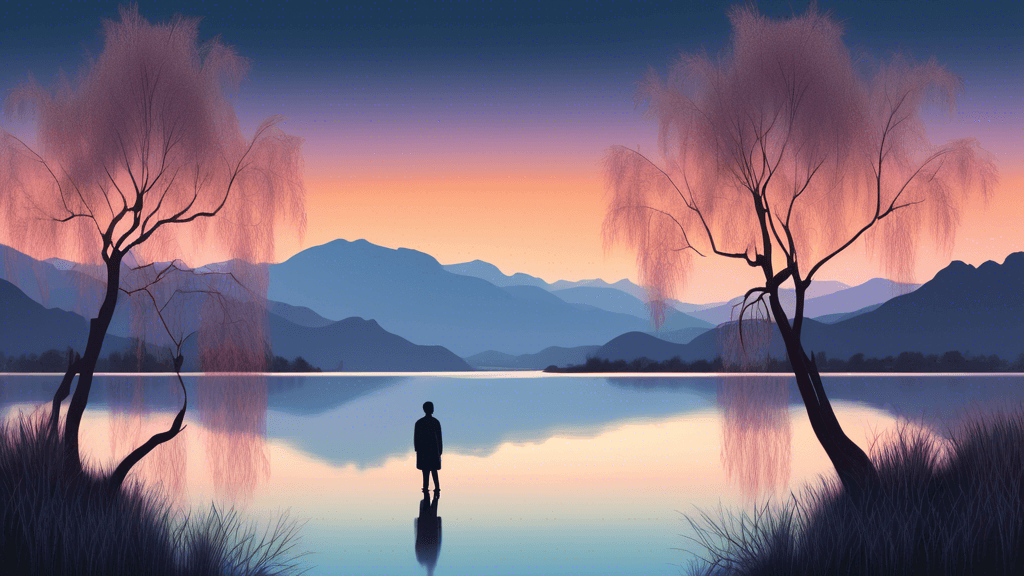
Capturing Solitude: Landscapes of Loneliness and Reflection
Share
Exploring the Depths of Solitude Through Landscape Photography
In the realm of photography, landscapes hold a unique position, offering more than just aesthetic appeal. They serve as a conduit for conveying complex human emotions such as loneliness and reflection. But what does it truly mean to capture these emotions through the lens of a camera? This blog delves into the nuanced art of using landscape photography to explore and express solitude.
Understanding the Emotional Impact of Landscapes
Landscape photography is not just about capturing the beauty of a place. It is also about capturing the mood, the atmosphere, and, most importantly, the emotion that the scene evokes. When solitary elements are framed against vast, expansive backgrounds, the resulting image can evoke a powerful sense of loneliness and reflection.
The Significance of Composition and Lighting
Composition and lighting are two pivotal elements in landscape photography. They guide the viewer's eye and set the tone of the image. Strategic use of these elements can enhance the solitary mood of a landscape. Consider the following:
- Minimalist Composition: Using a minimalist approach can emphasize the vastness of the landscape and the isolation of any focal points, reinforcing feelings of solitude.
- Lighting: The quality of light can dramatically alter the mood of a photograph. Low, diffused lighting often found during dawn or dusk, can create a melancholic, introspective feel.
Choosing the Right Moment
The timing of a shot is crucial in landscape photography. The ‘right’ moment can depend heavily on what emotion the photographer wishes to convey. An overcast day might reflect somberness, while a bright, sunny day might fail to convey the same depth of loneliness and introspection.
The Power of Location: Evoking Solitude through Scenery
The choice of location is integral to capturing the essence of loneliness in landscape photography. Remote and barren landscapes like deserts, frozen tundras, and empty shorelines are popular choices. These settings naturally evoke a sense of isolation, making it easier to convey solitude.
Case Studies: Masters of Solitude
Many renowned photographers have adeptly captured the essence of solitude. Ansel Adams, known for his black and white landscapes, utilized the stark contrasts and grand scales of his scenes to reflect solitude. His quote encapsulates this approach well:
Landscape photography is the supreme test of the photographer - and often the supreme disappointment. - Ansel AdamsThis highlights the challenges and complexities involved in capturing landscapes that convey deep emotions.
Practical Tips for Aspiring Photographers
To effectively capture landscapes of loneliness and reflection, consider the following tips:
- Explore Different Perspectives: Sometimes, capturing solitude requires looking at a landscape from a unique perspective or angle.
- Experiment with Weather Conditions: Mist, fog, and storm clouds can add a lot of emotion to landscapes, enhancing the feelings of isolation.
- Post-processing Techniques: Use subtle editing to enhance the mood without overtaking the natural beauty of the photograph.
Connecting Through the Lens of Solitude
In landscape photography, solitude does not just represent a lack of human presence. It evokes introspection and emphasizes our smallness in the vastness of nature. Through their lenses, photographers not only capture images; they capture feelings and stories, connecting deeply with viewers who might also be seeking moments of reflection in their busy lives.
Are you ready to explore the quiet and contemplative world of landscape photography? Whether you are a seasoned photographer or a curious beginner, remember: every landscape holds a story, waiting to be told through your unique perspective. So, grab your camera, find a location that resonates with you, and start capturing the silent narratives of the world around us.
Conclusion: Why Does Capturing Solitude Matter?
In a world bustling with noise and constant connection, photographs of solitude provide a visual respite. They remind us of the importance of quiet moments and personal reflection. As we explore landscapes of loneliness through our lenses, we not only become better photographers but also more introspective individuals.
So, next time you feel overwhelmed, consider taking a journey through landscape photography. It might just be the reflection you need to reconnect with both nature and yourself.
Let your journey of solitude and reflection begin today. Will you take the step?





